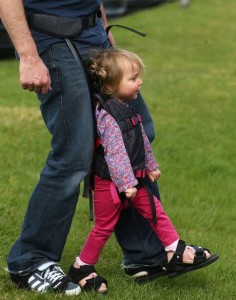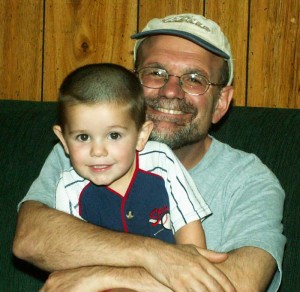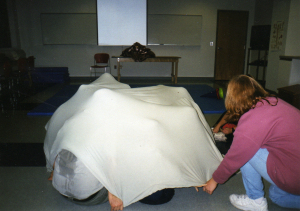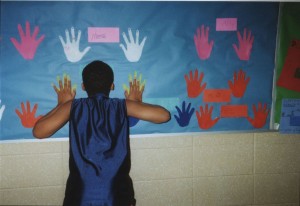Should you be recommending tummy time for children with neuromotor issues?
Please share your thoughts and experiences and then hear from our expert.
]]>Should you be recommending tummy time for children with neuromotor issues?
Please share your thoughts and experiences and then hear from our expert.
]]>
Each year APTA honors outstanding achievements on the part of its members in the areas of overall accomplishment, education, practice and service, publications, research, and academic excellence. We are thrilled to announce that Education Resources Faculty Member: Barbara Connolly has been awarded the Marilyn Moffat Leadership Award
Nominees must have:
 Barbara Connolly[/caption]BARBARA H. CONNOLLY, PT, DPT, Ed.D.,FAPTA received her BS degree in physical therapy from the University of Florida; a DPT degree from the University of Tennessee; a M.Ed. degree in special education with a minor in speech pathology and an EdD in curriculum and instruction from the University of Memphis. She is a Professor Emeritus at the University of Tennessee Health Sciences Center where she served as Chair of the Physical Therapy Department for 24 years. She also holds an adjunct academic appointment in the Graduate School of the University of Indianapolis. She is currently the President of the International Organization of Physical Therapists in Pediatrics, a subgroup of the World Confederation of Physical Therapy. She has served on the APTA Board of Directors, on the APTA Pediatric Specialty Council and the American Board of Physical Therapy Specialists. She was President of the Section on Pediatrics of the APTA from 2002 – 2006. She has also received the Bud DeHaven Leadership Award, the Research Award and the Jeanne Fischer Distinguished Mentorship Award from the Section on Pediatrics. In 2002, she received one of the highest honors from the APTA when she was named a Catherine Worthingham Fellow. She is the first author of 29 publications in peer reviewed journals, has written 21 book chapters and has coauthored or edited seven textbooks for physical therapists. She is certified in NDT and in SI. She continues to provide services to children through her private practice.
Barbara Connolly[/caption]BARBARA H. CONNOLLY, PT, DPT, Ed.D.,FAPTA received her BS degree in physical therapy from the University of Florida; a DPT degree from the University of Tennessee; a M.Ed. degree in special education with a minor in speech pathology and an EdD in curriculum and instruction from the University of Memphis. She is a Professor Emeritus at the University of Tennessee Health Sciences Center where she served as Chair of the Physical Therapy Department for 24 years. She also holds an adjunct academic appointment in the Graduate School of the University of Indianapolis. She is currently the President of the International Organization of Physical Therapists in Pediatrics, a subgroup of the World Confederation of Physical Therapy. She has served on the APTA Board of Directors, on the APTA Pediatric Specialty Council and the American Board of Physical Therapy Specialists. She was President of the Section on Pediatrics of the APTA from 2002 – 2006. She has also received the Bud DeHaven Leadership Award, the Research Award and the Jeanne Fischer Distinguished Mentorship Award from the Section on Pediatrics. In 2002, she received one of the highest honors from the APTA when she was named a Catherine Worthingham Fellow. She is the first author of 29 publications in peer reviewed journals, has written 21 book chapters and has coauthored or edited seven textbooks for physical therapists. She is certified in NDT and in SI. She continues to provide services to children through her private practice.Award recipients are recognized in June with a ceremony and reception
We are thrilled to offer Barbara’s course:
Praxis: Evaluation and Treatment of the Clumsy Child
April 25-26, 2014 – Cedar Knolls, NJ
July 25-26, 2014 – Columbia, MO
November 15-16, 2014 – New Brunswick, NJ
 [/caption]
[/caption]
We would love to hear your thoughts on this new invention out of Ireland. Designed by a Mother whose son is wheelchair bound, could this harness help children and families in the future?
Please share your thoughts and or experiences with us here, as this is about to be launched worldwide.
]]>  [/caption]
[/caption]
We are very excited to announce that our esteemed faculty member Erin Ross has had her SOFFI Method© of feeding recommended by the National Association of Neonatal Nurses.
The National Association of Neonatal Nurses recently published the Infant-Directed Oral Feeding for Premature and Critically Ill Hospitalized Infants. They state “To optimize the use of this guideline, it is recommended that the Supporting oral Feeding in Fragile Infants (SOFFI) Feeding Algorithm ((C) 2013 by Erin Ross) be used concurrently.” They also state “the use of the SOFFI in conjunction with this guideline is highly recommended. The SOFFI algorithm is grounded in similar principles as described in this guideline.”
Erin offers her SOFFI Method© : Supporting Oral Feeding in Fragile Infants
March 21-22, 2014 – Ft Lauderdale Area, FL
April 5-6, 2014 – Cincinnati, OH
October 24-25, 2014 – New Brunswick, NJ
“Dr. Ross is a wonderful speaker who presented the information in an easy to understand format and answered all questions above & beyond my expectations. This course is wonderful for therapists of all levels. You can feel the passion Dr. Ross has for treating and teaching about infant & premature development and feeding. i was able to apply information to past & present clients/patients and leave with immediate confidence & supportive research for application in process.” – Jessica VanBrocklin, SLP
National Association of Neonatal Nurses
“This guideline offers evidence-based protocols that can be individualized to an infant’s abilities (infant-directed) and acknowledge the family as the primary caregiver and feeder (family-centered). Guidance is provided for nurses to help parents interpret infant cues during feeding, problem solve infant behavior issues, and explore interventions to support the infant’s self-regulation throughout feedings. Based heavily on the literature, this guideline offers a consistent approach and language for all caregivers, including family members, in the pursuit of optimal oral feeding outcomes.”
 John Pagano[/caption]
John Pagano[/caption]
We would like to share this blog discussion from: John Pagano, a renowned member of Education Resources’ Faculty
John is teaching his popular conference: Effectively Treat Behavior in Children with Autism Spectrum and Other Sensory Challenges
May 2-3, 2014 – Las Vegas, NV
September 27-28, 2014 – Jacksonville, FL October 10-11, 2014 – Coon Rapids, MN
Please click above for full course details, to download a brochure or to register for the course.
Appropriate behavior for learning is enhanced by engaging sensory activities that teach rule based inhibitory movement control. Behavioral problems frequently involve inadequate inhibitory control of movement involving the arms (e.g., punching, slapping, scratching), legs (kicking) or mouth (e.g., spitting, biting, threatening, screaming, swearing). Teachers can collaborate with occupational, physical, speech/language, and mental health therapists to enhance self-control using developmentally appropriate movement activities with children and adolescents who have behavioral, mental health, sensory processing, and/or developmental challenges.
A major obstacle in teaching youngsters with behavioral challenges is motivating them to participate in challenging activities to enhance their development. Children and adolescents find movement activities engaging and fun. Involving students in brief developmentally appropriate movement brake activities enhances academic transitions, self-control and learning. Helpful activities include: playground tasks, parachute games, Simon says, red light, giant steps freeze dance, freeze shake, play plan, play review, obstacle courses, and movement to music (10 little hotdogs, Hokey-pokey, If your happy and you know it, Hot cross buns, We all need somebody to lean on).
 Additionally, basic yoga and mindfulness activities provide sensory movement that is useful as a pre-correction technique (e.g., activity used before problematic situations like school assemblies or lunch time). Pre-school and elementary classes benefit from mindfulness and basic yoga tasks such as the: wall pressing, tensing then relaxing their muscles, mindful clock, body scan, feel your feet, feel your palms, stretching activities, and isometric exercises.
Children with behavioral and sensory processing problems often show improved behavior following movement activities involving slow linear movement and deep pressure (e.g., pushups, wall pushups, desk pressing, rocking onto their hands on their stomachs over a therapy ball). Helpful activities for students with behavioral and sensory processing challenges who are integrated into a regular education program include: setting the table, moving mats, moving tables, moving chairs, passing out books, and delivering notes or packages to teachers through out the school.
Additionally, basic yoga and mindfulness activities provide sensory movement that is useful as a pre-correction technique (e.g., activity used before problematic situations like school assemblies or lunch time). Pre-school and elementary classes benefit from mindfulness and basic yoga tasks such as the: wall pressing, tensing then relaxing their muscles, mindful clock, body scan, feel your feet, feel your palms, stretching activities, and isometric exercises.
Children with behavioral and sensory processing problems often show improved behavior following movement activities involving slow linear movement and deep pressure (e.g., pushups, wall pushups, desk pressing, rocking onto their hands on their stomachs over a therapy ball). Helpful activities for students with behavioral and sensory processing challenges who are integrated into a regular education program include: setting the table, moving mats, moving tables, moving chairs, passing out books, and delivering notes or packages to teachers through out the school.
Finally, special accommodations can sometimes be made for children who are  academically bright but have difficulty maintaining a sustained seated position. Sitting on therapy balls, sitting on disk-o-sit cushions, standing in a masking taped area, or using a sensory area in the back of the class where they can do there work without disturbing or being disturbed by others. Rolling to read and rolling to math are useful activities for children who can’t remain seated but are capable of academically advanced work. During resource room, occupational and speech/language therapy, and home work sessions they roll across the floor then read a chapter in a book or complete several math flash cards. After completing the reading or math they are reinforced then roll again and do the next chapter or flash cards.
Particularly for preschool, kindergarten, and all students who have behavioral, psychiatric, developmental, sensory processing, and/or trauma history challenges it helps to include movement activities in the classroom. Students are initially taught the cardinal rules for movement tasks: “Don’t touch any body or anything with out permission, and resume good learning after so we can do this activity tomorrow (if not we will skip this activity tomorrow then try it again the next day and I’m sure you will do much better”). Teachers and principles understand that students benefit from movement engaging the bodily-kinesthetic, interpersonal, and musical intelligences. While the teachers I work with and I am accused of “coddling students” and “wasting time” by using movement activities in the class room, no one can dispute our data showing this method results in increased academic goal achievement and decreased behavioral problems.
References:
Dunn, W. (2007). Supporting children to participate successfully in everyday life by using sensory processing knowledge. Infants & Young Children, 20(2), 84-101.
Flook, L., Smalley, S., Kitil, M., Galla, B., Kaiser-Greenland, S., Locke, J., Ishijima, E., Kasari, C. (2010). Effects of mindful awareness practices on executive functions in elementary school children. Journal of Applied School Psychology, 26, 70-95.
Koester, C. (2012). Movement based learning for children of all abilities. Reno, NV: Movement Based Learning Inc.
Riggs, N.R., Greenberg, M.T., Kusche, C.A., Pentz, M.A. (2006). The mediational role of neurocognition in the behavioral outcomes of a social-emotional prevention program in elementary school students: Effects of the PATHS curriculum. Prevention Science, 7(1), 91-102.
Warner, E., Koomar, J., Lary, B . & Cook, A. (2013). Can the body change the score? Application of sensory modulation principles in the treatment of traumatized adolescents in residential treatment settings. Journal of Family Violence, 28(7), 729-738.
academically bright but have difficulty maintaining a sustained seated position. Sitting on therapy balls, sitting on disk-o-sit cushions, standing in a masking taped area, or using a sensory area in the back of the class where they can do there work without disturbing or being disturbed by others. Rolling to read and rolling to math are useful activities for children who can’t remain seated but are capable of academically advanced work. During resource room, occupational and speech/language therapy, and home work sessions they roll across the floor then read a chapter in a book or complete several math flash cards. After completing the reading or math they are reinforced then roll again and do the next chapter or flash cards.
Particularly for preschool, kindergarten, and all students who have behavioral, psychiatric, developmental, sensory processing, and/or trauma history challenges it helps to include movement activities in the classroom. Students are initially taught the cardinal rules for movement tasks: “Don’t touch any body or anything with out permission, and resume good learning after so we can do this activity tomorrow (if not we will skip this activity tomorrow then try it again the next day and I’m sure you will do much better”). Teachers and principles understand that students benefit from movement engaging the bodily-kinesthetic, interpersonal, and musical intelligences. While the teachers I work with and I am accused of “coddling students” and “wasting time” by using movement activities in the class room, no one can dispute our data showing this method results in increased academic goal achievement and decreased behavioral problems.
References:
Dunn, W. (2007). Supporting children to participate successfully in everyday life by using sensory processing knowledge. Infants & Young Children, 20(2), 84-101.
Flook, L., Smalley, S., Kitil, M., Galla, B., Kaiser-Greenland, S., Locke, J., Ishijima, E., Kasari, C. (2010). Effects of mindful awareness practices on executive functions in elementary school children. Journal of Applied School Psychology, 26, 70-95.
Koester, C. (2012). Movement based learning for children of all abilities. Reno, NV: Movement Based Learning Inc.
Riggs, N.R., Greenberg, M.T., Kusche, C.A., Pentz, M.A. (2006). The mediational role of neurocognition in the behavioral outcomes of a social-emotional prevention program in elementary school students: Effects of the PATHS curriculum. Prevention Science, 7(1), 91-102.
Warner, E., Koomar, J., Lary, B . & Cook, A. (2013). Can the body change the score? Application of sensory modulation principles in the treatment of traumatized adolescents in residential treatment settings. Journal of Family Violence, 28(7), 729-738.